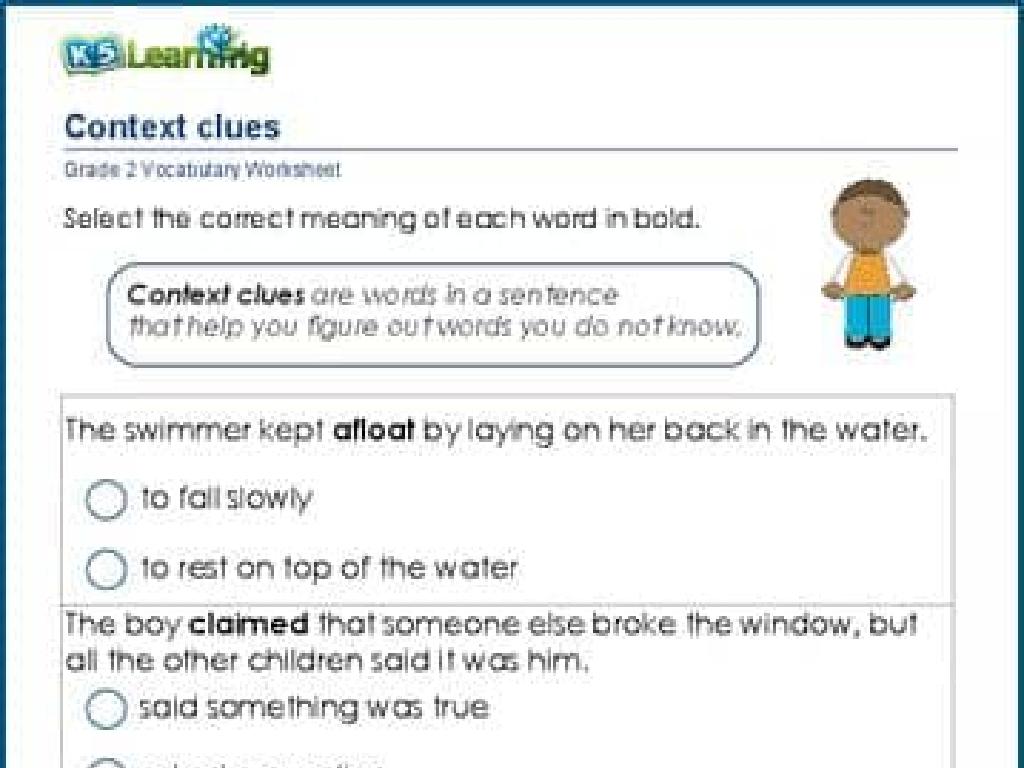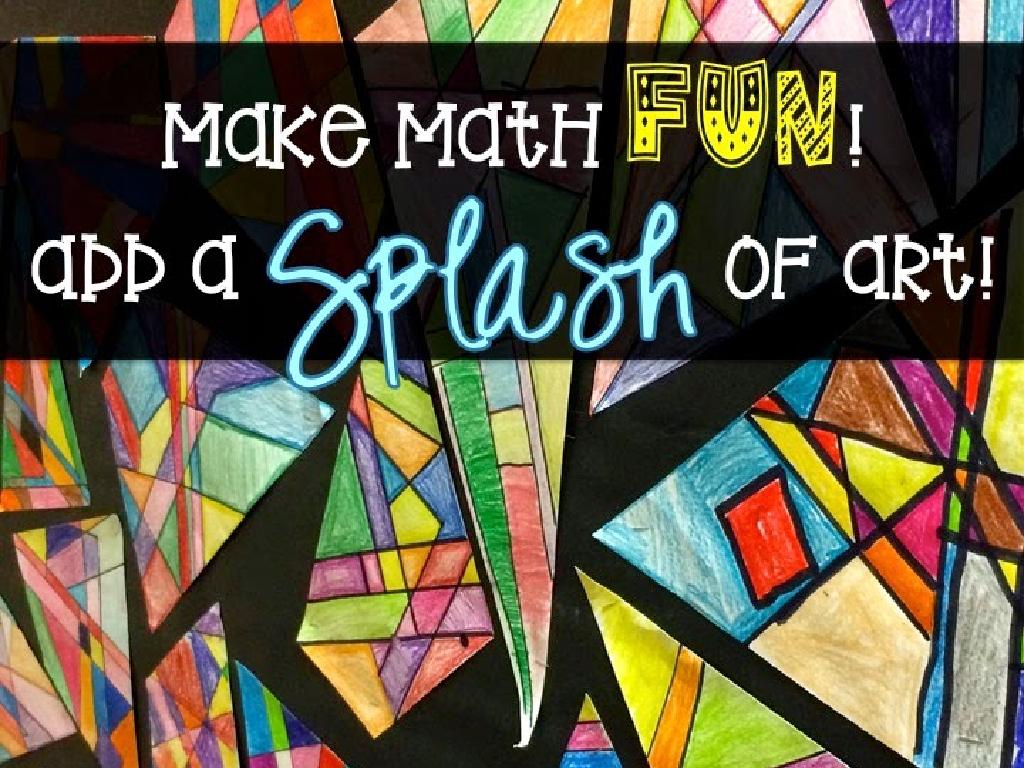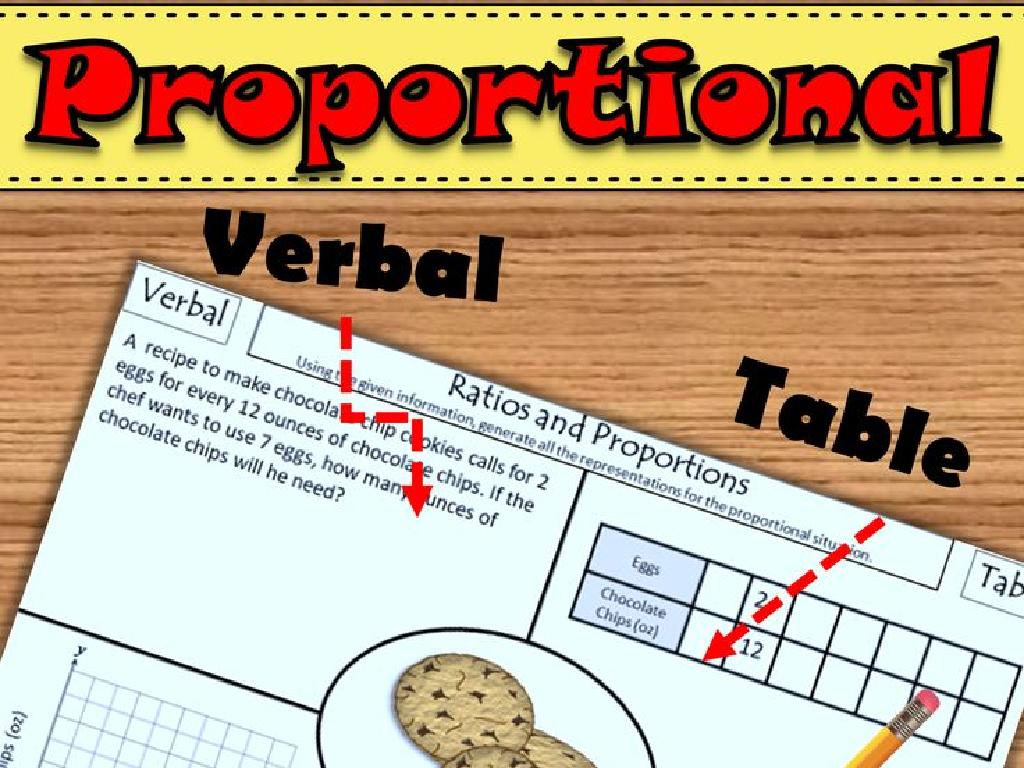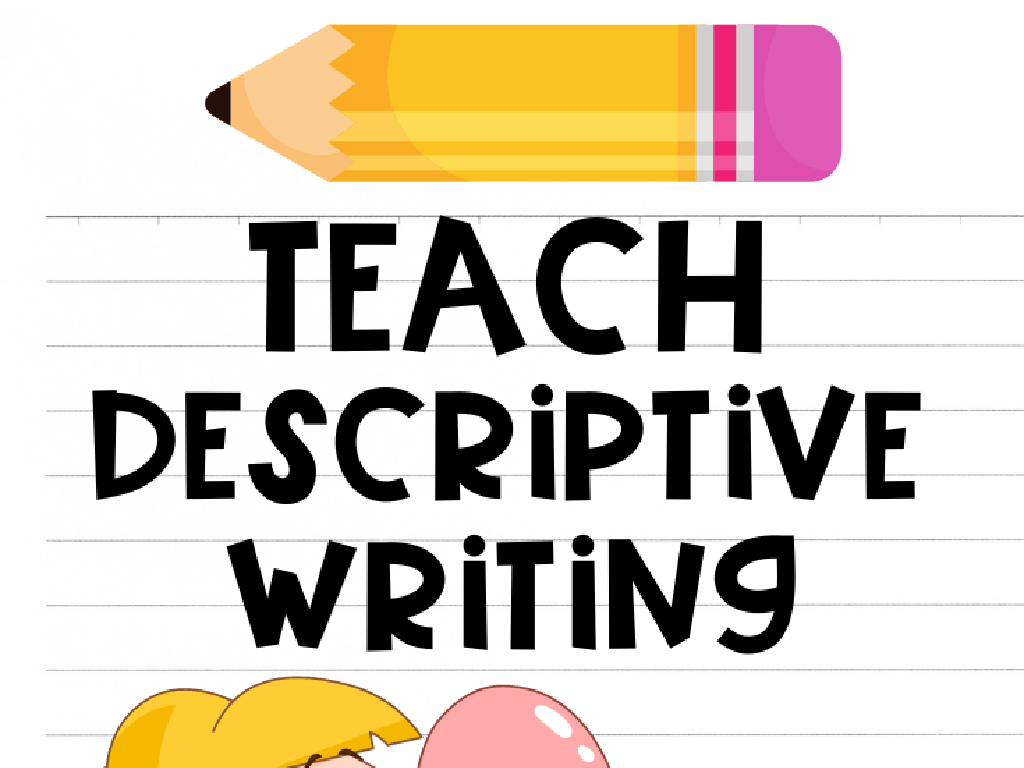Multiply 1-Digit Numbers By Teen Numbers Using Grids
Subject: Math
Grade: Fourth grade
Topic: Multiply By One-Digit Numbers
Please LOG IN to download the presentation. Access is available to registered users only.
View More Content
Introduction to Multiplication with Grids
– What is multiplication?
– Multiplication is repeated addition, e.g., 3 x 4 means adding 3 four times.
– Reasons we use multiplication
– To quickly add groups of the same number, to find totals, or to solve problems.
– Reviewing multiplication facts
– Recall times tables for numbers 1 through 10.
– Multiplying with grids
– Using grids helps visualize the process of multiplying numbers, especially helpful with larger numbers like teens.
|
This slide introduces the concept of multiplication as a foundation for understanding how to multiply 1-digit numbers by teen numbers using grids. Begin by explaining multiplication as repeated addition, which is a key concept for fourth graders. Discuss real-life scenarios where multiplication is necessary, such as calculating total items or combining equal groups. Review multiplication facts to ensure students are comfortable with basic times tables, as this will aid in their understanding of grid multiplication. Introduce the grid method as a visual tool that will be explored in the following slides, emphasizing its usefulness in simplifying larger multiplication problems.
Multiplying with Teen Numbers
– Understanding teen numbers
– Teen numbers are from 13 to 19
– Examples of teen numbers
– 13 (thirteen), 14 (fourteen), 15 (fifteen), etc.
– Why multiply with teen numbers?
– It’s a key skill for advanced math problems
– Practice with grids
|
This slide introduces the concept of teen numbers and their significance in multiplication for fourth graders. Begin by explaining that teen numbers range from 13 to 19. Provide clear examples of teen numbers to ensure understanding. Emphasize the importance of being able to multiply with teen numbers as it lays the groundwork for more complex math concepts. Incorporate grid methods to visually demonstrate multiplication with teen numbers, which can help students grasp the concept more concretely. Encourage students to practice with different teen numbers using grids to solidify their learning.
Using Grids for Multiplication
– What’s a multiplication grid?
A grid has rows and columns to arrange numbers for multiplying.
– Grids as a multiplication tool
Grids break down teen numbers into tens and ones, making it easier to multiply.
– Steps to set up a multiplication grid
Place one number at the top, one on the side, and fill in the grid.
– Practice multiplying with grids
Let’s try 7 x 14: use the grid to multiply 7 by 10 and 7 by 4, then add the results.
|
This slide introduces the concept of using grids to simplify the process of multiplying 1-digit numbers by teen numbers. A multiplication grid is a visual tool that helps students organize their work and understand the concept of place value in multiplication. It’s particularly useful for visual learners. When setting up the grid, make sure students understand how to decompose the teen number into tens and ones. This method reinforces the distributive property of multiplication. For the practice example, guide students through the process step by step, ensuring they understand how to add the partial products to find the final answer. Encourage students to try more examples for homework.
Multiplying with Grids: 1-Digit by Teens
– Step-by-step grid multiplication
– Break down the teen number and multiply separately, then add results
– Example: 7 x 13 on a grid
– 7 rows of 10 plus 7 rows of 3 makes 91
– Practice: Multiply 5 x 14 using a grid
– Try it yourself with 5 rows of 10 and 5 rows of 4
|
This slide introduces students to the concept of using grids to multiply 1-digit numbers by teen numbers. Start by explaining the grid method, where the teen number is broken down into 10 plus the remaining units. Show an example on the board or interactive whiteboard by drawing a grid for 7 x 13, breaking it into 7 x 10 and 7 x 3, and then adding the results together. After the example, give students a practice problem, 5 x 14, and let them solve it using the grid method. Walk around the classroom to assist and ensure understanding. This visual approach helps students grasp the concept of multiplication as repeated addition and prepares them for more complex multiplication.
Multiplying with Grids: Tips and Tricks
– Remember the multiplication steps
– Write the numbers above and side of the grid, multiply each box, then add them up.
– Use patterns to predict products
– Notice patterns like how multiplying by 5 always ends in 0 or 5.
– Check work with reverse operations
– Use division to ensure the multiplication answer is correct.
|
This slide aims to provide students with helpful strategies for multiplying 1-digit numbers by teen numbers using grids. Start by reinforcing the steps of multiplication: setting up the grid with the numbers, multiplying each section, and then adding the results. Highlight the usefulness of recognizing patterns in multiplication, such as the products of 5 or the doubling pattern when multiplying by 2. Encourage students to always check their work by using the inverse operation, division, to verify their answers. Provide examples and practice problems to illustrate these tips and tricks. For instance, multiplying 3 by 14 using a grid, identifying the pattern when multiplying by 10, and checking the product of 3 and 14 by dividing the product by 3 to see if the result is 14.
Group Multiplication with Grids
– Group activity: solve with grids
– Each group presents their solution
– Discuss the variety of methods
– Understand different solving strategies
|
This slide introduces a class activity focused on multiplying 1-digit numbers by teen numbers using grids. Divide the class into small groups and provide each with a set of multiplication problems. Each group will use grid paper to visually represent and solve the problems. After completing the problems, groups will present their grids and solutions to the class, explaining their approach. Facilitate a class discussion to compare the different methods used by each group, highlighting the variety of strategies that can be applied to solve multiplication problems. This activity encourages collaboration, reinforces the concept of multiplication, and enhances problem-solving skills. Possible activities: 1) Multiplying by breaking apart numbers, 2) Using arrays to represent problems, 3) Drawing area models, 4) Creating number lines to visualize multiplication.
Homework: Grid Multiplication Practice
– Practice grid multiplication at home
– Use grids to multiply 1-digit by teen numbers
– Finish the multiplication worksheet
– Worksheet has problems to solve using grids
– Study for the upcoming quiz
– Review your notes and practice problems
|
This slide is aimed at reinforcing students’ understanding of grid multiplication. The homework involves practicing the grid method for multiplying single-digit numbers by teen numbers, which helps visualize the multiplication process. The provided worksheet should contain a variety of problems to ensure students get ample practice. Encourage students to review their class notes and solve additional problems to prepare for the multiplication quiz in the next class. Offer some strategies for studying, such as working in a quiet space, checking work for errors, and explaining their methods to a family member to solidify their understanding.
Wrapping Up: Multiplication with Grids
– Review of grid multiplication
– Remember how we multiply single digits by teens using grids.
– Practice makes perfect
– Keep practicing at home to get faster and more accurate.
– Always ask if unsure
– If something is confusing, don’t hesitate to ask for help!
– What’s next: Larger numbers
– We’ll tackle multiplying larger numbers in our next lesson.
|
As we conclude today’s lesson, it’s important to recap the grid multiplication method we’ve learned for multiplying 1-digit numbers by teen numbers. Emphasize the importance of practice in mastering this skill and encourage students to ask questions whenever they encounter difficulties. Looking ahead, give the students a sneak peek into the next lesson where they will apply their skills to multiply larger numbers, building on the foundation they’ve established today. Provide some example problems for them to try at home and remind them of the resources available if they need extra help.





